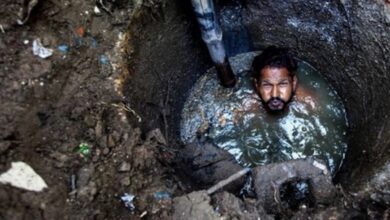Can children spread Coronavirus? Positive result can be dangerous
So you might have heard from your local newspaper and surrounding discussions that kids are a greater danger of spreading the risk of the Coronavirus. But how credible is this news?
One question remains unanswered: the role of children in spreading COVID-19 as schools across the nation consider reopening for fall with classes. A small number are becoming infected and also with milder symptoms, although Children aren’t resistant to the novel coronavirus.
And while kids tend to be regarded as “superspreaders” of lymph bacteria, they have not appeared to become significant transmitters of both SARS-CoV-2. But recent study raises questions with a study finding that kids carry at least the same amount of coronavirus in their noses and throats as adults that are infected. Experts caution that the research is small with limitations and does not mean that kids are most likely to pass on the virus to others. Alison Tribble, M.D., a Pediatric infectious diseases specialist at Michigan Medicine C.S. Mott Children’s Hospital, answers some high inquiries.
So, how the studies are being conducted?
Researchers evaluated RNA (the genetic blueprint of the virus) in rectal swabs obtained from 145 infected individuals between March and April, including 46 children younger than five and 51 children aged 5 to 17.
Children with severe symptoms requiring oxygen aid who’d be likely to possess the greatest detectable levels of the virus — have been also excluded. The study, led to the Ann and Robert H. Lurie Children’s Hospital of Chicago, found that children younger than five might host almost 100 times that the viral burden of coronavirus in their upper respiratory tracts as adults.
Meanwhile, these ages 5-17 had the identical level as contaminated adults. The findings are consistent with a previous study in Germany that included 47 infected children between ages 1 and 11. Tribble says it’s essential to note that the tests looked for viral RNA, genetic parts of the coronavirus, as opposed to the virus.
While this technique helps provide an estimate of just how much virus is present, it is not a dimension that is reliable.
The studies don’t say concrete results about the spread of the virus and how children can be super-spreaders. But one thing which is for certain is the fact that a lot of parents are not allowing their child to get into schools which can be a cause of huge risk to them.
The CDC has also created a decision-making tool to help parents weigh the risks and advantages of sending kids back to school. Tribble says parents should review their college’s plan for implementing mitigation measures and make certain that they are prepared for reducing the spread of Coronavirus (e.g. wearing masks), maintaining clean and healthy environments, maintaining social distancing (e.g. shocking programs and keeping students in smallish cohorts) and having a strategy for when somebody gets sick.




